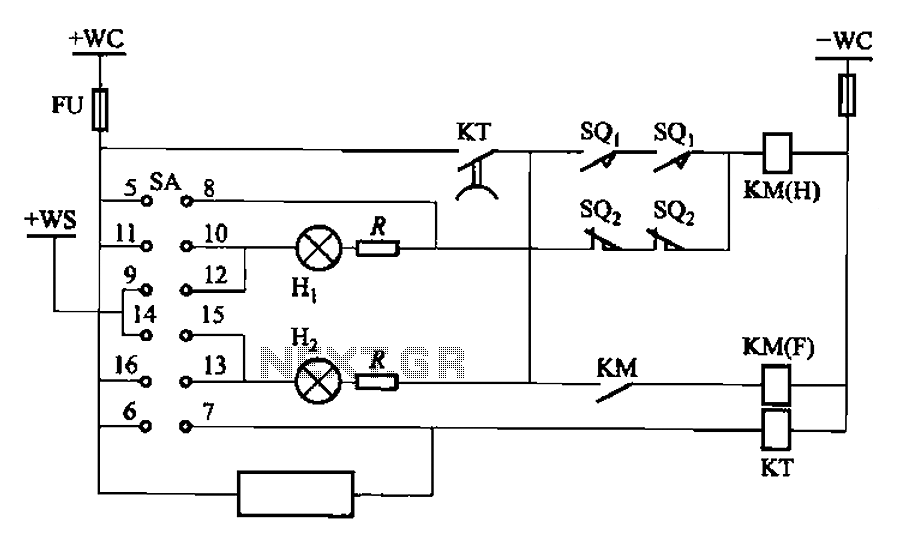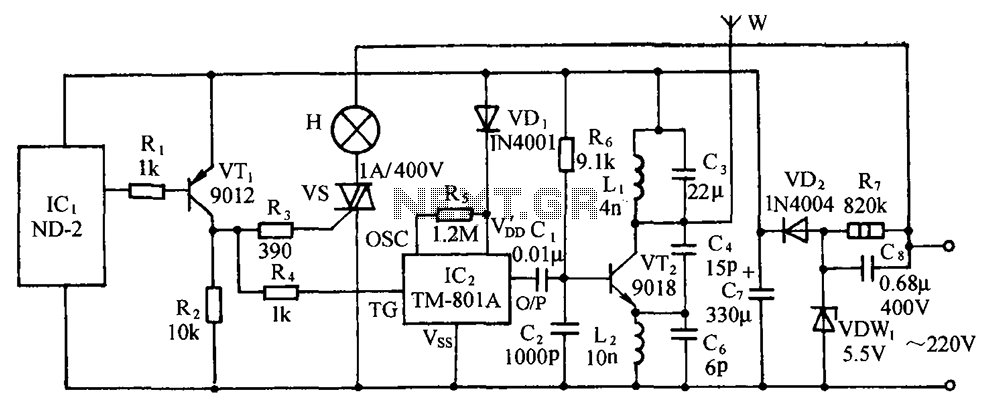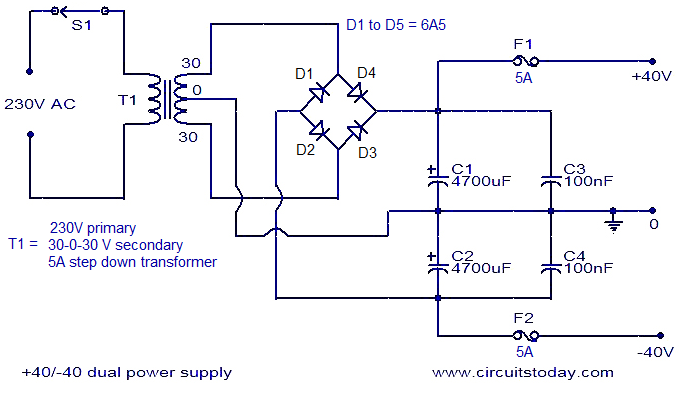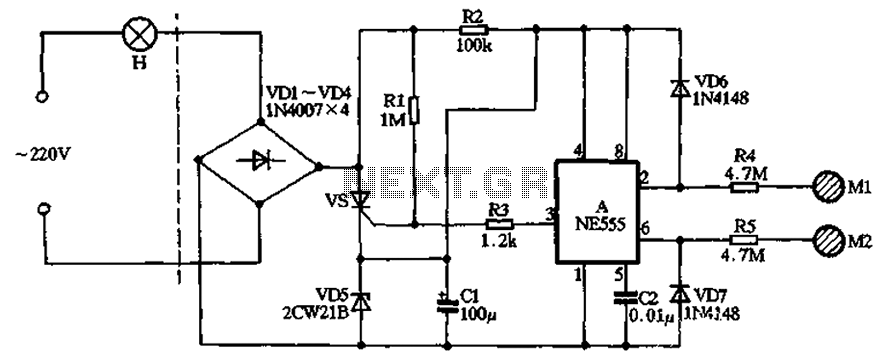
BT9404 type excitation switch control circuit

The BT9404 is a de-excitation type switch utilized with CJ4-S contactors and JT3-21/3-type electromagnetic relays. The control circuit is depicted in Figure 7-55. The KM contactors used are CJ4-S, while the time relay is the JT3-21/3. The SA component controls the switch LW2-2-la, 4, 6a, 40, 20/F8. Additionally, it includes Hi and Hz indicators in green and red, with specifications of 11OV, 8W, and an additional resistance of 2.5kΩ. The SQ1 and SQ2 serve as terminal switches.
The BT9404 de-excitation type switch is designed to effectively manage the operation of CJ4-S contactors and JT3-21/3 electromagnetic relays in various electrical applications. The schematic representation of the control circuit, as illustrated in Figure 7-55, provides a comprehensive overview of the interconnections and functionalities of the components involved.
The CJ4-S contactors serve as the primary switching devices, responsible for controlling high-power circuits. They are designed to handle significant load currents and voltages, ensuring reliable operation in demanding environments. The JT3-21/3 time relay introduces a delay function, allowing for precise timing control in the switching operation. This feature is crucial in applications where sequential operation or time-based control is required.
The SA component plays a vital role in controlling the LW2-2-la switch, which is responsible for managing multiple outputs, indicated by the numbers 4, 6a, 40, and 20/F8. This switch configuration allows for flexible control over various circuits, enhancing the overall functionality of the system.
The inclusion of Hi and Hz indicators in green and red provides visual feedback on the operational status of the system, facilitating monitoring and diagnostics. The specifications of 11OV and 8W indicate the operational voltage and power consumption of the indicators, ensuring they are suitable for integration into the control circuit without overloading.
Furthermore, the additional resistance of 2.5kΩ is likely employed for current limiting or signal conditioning purposes, ensuring that the control signals remain within acceptable levels for the connected components. The SQ1 and SQ2 terminal switches are crucial for establishing connections within the circuit, allowing for the integration of external devices and enhancing the modularity of the system.
Overall, the BT9404 de-excitation switch, in conjunction with CJ4-S contactors and JT3-21/3 relays, forms a robust control circuit capable of managing complex electrical tasks with precision and reliability. BT9404 de-excitation type switch by the CJ4-S contactors and JT3-21/3-type electromagnetic relays. Its control circuit is shown in Figure 7-55. Figure, KM contactors CJ4-S; KT was time relay JT3-21/3; SA controls switch LW2-2-la, 4, 6a, 40, 20/F8; Hi, Hz green, red XD2, llov, 8W, additional resistance 2.5k0; SQi, SQ2 for the terminal switch.
The BT9404 de-excitation type switch is designed to effectively manage the operation of CJ4-S contactors and JT3-21/3 electromagnetic relays in various electrical applications. The schematic representation of the control circuit, as illustrated in Figure 7-55, provides a comprehensive overview of the interconnections and functionalities of the components involved.
The CJ4-S contactors serve as the primary switching devices, responsible for controlling high-power circuits. They are designed to handle significant load currents and voltages, ensuring reliable operation in demanding environments. The JT3-21/3 time relay introduces a delay function, allowing for precise timing control in the switching operation. This feature is crucial in applications where sequential operation or time-based control is required.
The SA component plays a vital role in controlling the LW2-2-la switch, which is responsible for managing multiple outputs, indicated by the numbers 4, 6a, 40, and 20/F8. This switch configuration allows for flexible control over various circuits, enhancing the overall functionality of the system.
The inclusion of Hi and Hz indicators in green and red provides visual feedback on the operational status of the system, facilitating monitoring and diagnostics. The specifications of 11OV and 8W indicate the operational voltage and power consumption of the indicators, ensuring they are suitable for integration into the control circuit without overloading.
Furthermore, the additional resistance of 2.5kΩ is likely employed for current limiting or signal conditioning purposes, ensuring that the control signals remain within acceptable levels for the connected components. The SQ1 and SQ2 terminal switches are crucial for establishing connections within the circuit, allowing for the integration of external devices and enhancing the modularity of the system.
Overall, the BT9404 de-excitation switch, in conjunction with CJ4-S contactors and JT3-21/3 relays, forms a robust control circuit capable of managing complex electrical tasks with precision and reliability. BT9404 de-excitation type switch by the CJ4-S contactors and JT3-21/3-type electromagnetic relays. Its control circuit is shown in Figure 7-55. Figure, KM contactors CJ4-S; KT was time relay JT3-21/3; SA controls switch LW2-2-la, 4, 6a, 40, 20/F8; Hi, Hz green, red XD2, llov, 8W, additional resistance 2.5k0; SQi, SQ2 for the terminal switch.





